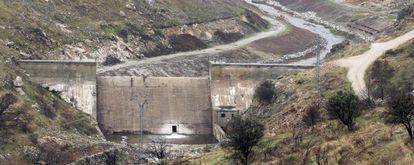As of 2015, there are approximately 1200 functional dams in Spain. Historically it is a country of well-constructed dams as throughout the years it hasn’t required the demolition of many of them, having only required the dismantling of some artificial weirs for ecological or functional reasons, or for the need of upgrading them. The decision to demolish a functional dam during its projected lifespan isn’t a straightforward one, as it indicates that during the initial planning stage mistakes and miscalculations were made. Nonetheless it is even more complex to wipe out every single trace left by this type of building in the environment, the nature and its surroundings. The estimated period of time to achieve this can vary from 25 to 50 years depending on the impact of the structure on the habitat. In the field of ecology and environment, it is common knowledge that a poor quality practice and the lack of an appropriate previous environmental impact study, can lead to a situation where the footprint exerted by this type of structure is not only complicate to erase, but it can be indelible.
However there are also examples of good practices such as the dismantling of the dam named Presa de Robledo de Chavela located in the river Cofio in Madrid, Spain. This was a landmark achievement in the history of Spain’s civil engineering, because at the time it was the highest gravity dam ever dismantled in said country’s history. This dam was constructed in 1968 with a crest height in its apex of 23m, and had a short lifespan of 22 years, unfortunately requiring the ceasing of its operations in 1990 due to various complications. The main cause that led to the cessation of the dam was the decrease in the water quality standards as a result of organic waste dumped into the river coming from livestock industry located upstream. An unexpected consequence of the suspension of the dam was that, with time, and as result of the cessation of operations, the mechanical resistance of the structure debilitated, causing the cracking of the concrete body of the dam. The water infiltrated and penetrated through these cracks, mixing with the materials in the dam and creating a mud-like substance. Sadly, this substance worsened the turbidity of the water, aggravating the life standards of the autochthonous marine species with special significance on the barbel and the Iberian nase. It wasn’t after a time that the local authorities noticed the problem and raised various alternatives to put a stop to the dilemma.

Additionally, other problems arose such as the instability of the slopes of the reservoir, problem that was resolved by drilling wooden piles into the ground, effectively improving the stability of the slope. Simultaneously these piles also had a secondary function. Since they weren’t inserted into the terrain in the totality of their length, there was a portion of the pile that stood out of the ground. By placing two wooden trunks between piles, the slope was terraced and the cohesion was improved. This was a favorable situation for the growth of the trees that were seeded, that varied from pine trees to oaks, and it was a step forward towards giving back the landscape its original and natural state. In cases where the slope was moderate, the piling system was similar but at a smaller scale, replacing the in-between trunks by smaller branches that also improved the stability of the slope. Another problem that appeared was the erosion of the river which had a significant effect on the species it is home to, as this too increased the turbidity of the water. As a result of the turbidity currents, the risk of sediment deposition was increased which potentially reduces the living habitat of the species the river contains. In order to prevent this, banks of granite were placed on either side of the river, both upstream and downstream.
It is still early to foretell whether these solutions will be effective in reducing the environmental impact in river Cofio or not. Nonetheless, it is safe to say that sufficient steps have been taken to minimize the effects on the environment and its surroundings, but only time will tell if this was achieved.
Miguel Ángel Serrano Leo

